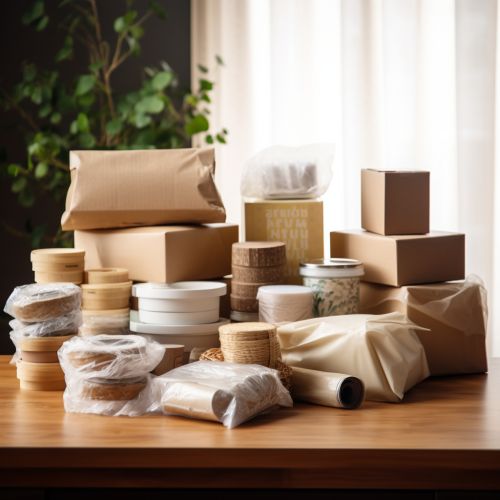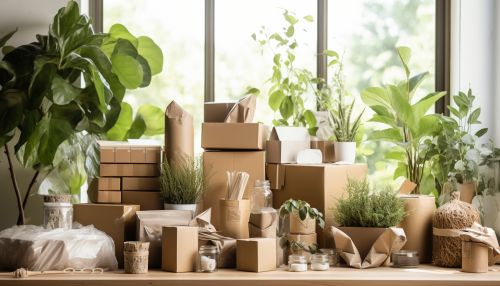Eco-friendly Packaging
Introduction
Eco-friendly packaging, also known as green packaging, is a type of packaging that utilizes materials and manufacturing methods that have a low impact on the environment. It is part of the broader concept of sustainable packaging, which also includes considerations for social and economic factors. The use of eco-friendly packaging is becoming increasingly important as consumers and businesses alike recognize the need to reduce waste and minimize environmental impact.
History
The concept of eco-friendly packaging has been around for several decades, but it has gained significant attention in recent years due to growing concerns about climate change and environmental sustainability. Early efforts in eco-friendly packaging were primarily focused on reducing the amount of packaging material used, but the scope has since expanded to include the use of renewable materials, energy-efficient manufacturing processes, and end-of-life disposal considerations.
Types of Eco-friendly Packaging
There are several types of eco-friendly packaging, each with its own benefits and challenges.
Recycled Content Packaging
Recycled content packaging is made from materials that have been recovered or diverted from the waste stream. This can include post-consumer recycled materials, which are materials that have been used and discarded by consumers, as well as post-industrial recycled materials, which are waste materials generated during manufacturing processes.
Plant-based Packaging
Plant-based packaging is made from renewable resources such as corn, sugarcane, and bamboo. These materials are often biodegradable and compostable, making them a more sustainable option than traditional petroleum-based plastics.
Biodegradable Packaging
Biodegradable packaging is designed to break down naturally in the environment over time. This type of packaging is often made from organic materials such as paper, cardboard, and certain types of bioplastics.
Reusable Packaging
Reusable packaging is designed to be used multiple times before being discarded. This can include items such as glass bottles, cloth bags, and durable plastic containers.


Benefits of Eco-friendly Packaging
Eco-friendly packaging offers several benefits over traditional packaging materials.
Environmental Benefits
The most obvious benefit of eco-friendly packaging is its reduced impact on the environment. By using materials that are renewable, recyclable, or biodegradable, eco-friendly packaging helps to conserve natural resources, reduce waste, and decrease greenhouse gas emissions.
Economic Benefits
Eco-friendly packaging can also offer economic benefits. While the initial cost of eco-friendly packaging materials may be higher than traditional materials, businesses can often recoup these costs through increased sales to environmentally conscious consumers. Additionally, the use of recycled or renewable materials can help businesses reduce their reliance on volatile commodity markets.
Social Benefits
Finally, eco-friendly packaging can provide social benefits by promoting a culture of sustainability. By choosing eco-friendly packaging, businesses can demonstrate their commitment to environmental stewardship, which can enhance their reputation and build customer loyalty.
Challenges and Considerations
While eco-friendly packaging offers many benefits, it also presents several challenges and considerations.
Cost
One of the main challenges of eco-friendly packaging is cost. Eco-friendly packaging materials are often more expensive than traditional materials, and the manufacturing processes can also be more costly. However, these costs are decreasing as technology improves and demand for eco-friendly packaging increases.
Performance
Another challenge is performance. Eco-friendly packaging materials must be able to protect the product, withstand the rigors of transportation, and meet the needs of consumers. In some cases, eco-friendly materials may not offer the same level of performance as traditional materials.
Consumer Perception
Consumer perception is another important consideration. While many consumers are interested in eco-friendly products, they may not be willing to pay a premium for them. Additionally, consumers may have misconceptions about the environmental benefits of certain types of eco-friendly packaging.
Future Trends
The future of eco-friendly packaging looks promising, with several trends indicating continued growth and innovation in this field.
Increased Demand
Demand for eco-friendly packaging is expected to continue to grow as consumers become more environmentally conscious and as regulations around packaging waste become more stringent.
Technological Innovation
Technological innovation will also play a key role in the future of eco-friendly packaging. Advances in materials science and manufacturing processes will likely lead to the development of new and improved eco-friendly packaging solutions.
Regulatory Changes
Regulatory changes will also influence the future of eco-friendly packaging. Governments around the world are implementing policies to reduce packaging waste and promote the use of eco-friendly packaging.
